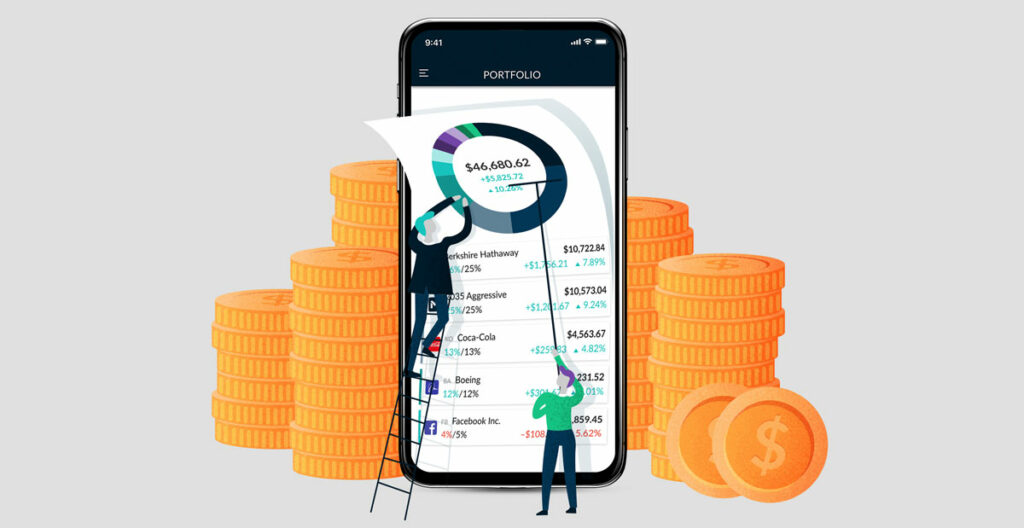Understanding investments that market outperform
What is the market? What does it mean for an investment to market outperform?
In terms of securities, the market refers to where securities may be traded. The term can refer to the overall market or to individual securities markets.
Market outperform is a rank that stock analysts can give to stocks. A stock that is ranked as market outperform is one that is expected to outperform a specific index or the overall market. It is considered to be a better ranking than market perform and one step less than a strong buy rating. Other rankings that might be given include market underperform and strong sell rankings.
Market statistics
The U.S. stock market accounts for 40 percent of the world’s stock market cap and is the biggest in the world. Since 2009, the global market capitalization has increased by 320 percent to more than $80 trillion. Over the past 100 years, there have been 18 recessions. However, only two recessions have occurred in the past two decades, occurring from 2000 to 2002 and 2008 to 2009.
The percentage of Americans who are invested in the stock market has declined. In 2002, 62 percent of Americans were invested in the stock market. As of 2016, the number had fallen to 52 percent.
While recessions do occur, the overall statistics demonstrate that investors can make money if they are able to stay in the market and wait them out. There is not an easy way to see how many public stocks are rated market outperform or to predict those that are likely to outperform the market.

Defining the financial market
The financial market refers to any market in which securities are traded. Some financial markets are very small and have little activity while other markets are very large and trade trillions of dollars’ worth of securities each day.
Prices on a financial market might not reveal the true value of a stock because of market forces such as taxes. There are both primary and secondary financial markets for the trading of stock securities.
Classifications
There are a number of different classifications of financial markets, including the following:
- Capital markets, including stock markets and bond markets
- Commodities markets
- Money markets
- Derivatives markets
- Futures markets
The stock market is where new issues of stocks are bought and sold. Public companies offer stocks to investors as a type of risk sharing so that they can transfer some of their risk to the investors who purchase their stocks. Bond markets allow investors to buy and sell bonds that are issued by the government, municipalities, and corporations.
Commodities markets exist so companies can offset their futures risks when they buy or sell natural resources for risk sharing. Money markets are markets that deal with short-term, highly liquid maturities such as money market funds.
Derivatives markets are markets through which financial products that base their value on underlying assets are bought and sold. Hedge funds may rely heavily on derivatives and other risky investment strategies to try to outperform the market for their investors. However, the risk sharing techniques used by hedge funds might mean that investors can stand to lose substantial amounts of money when they invest in hedge funds. Futures markets are auction markets through which investors buy and sell futures contracts for delivery on a specific date for risk sharing.
Functions
Financial markets have six basic financial functions, including the following:
- Borrowing and lending – Permitting the transfer of funds from one party to another either for consumption or investing;
- Determination of price – Offer a way to set prices for new stocks and existing stocks;
- Information aggregation and coordination – Collect and aggregate information about securities’ value and the flow of money;
- Risk sharing – Transfers risk from parties that undertake investments to those who provide funds for them for risk sharing;
- Liquidity – Offer people who hold assets the chance to liquidate them; and
- Efficiency – Reduce information and transaction costs.

What is investment performance?
Your portfolio’s investment performance refers to its return. A portfolio may include a single asset or multiple assets. It is important for you to evaluate your investment performance so that you can understand how your assets are working and whether they are helping you to make progress toward reaching your financial goals.
There are a few different methods for evaluating your portfolio’s investment performance. The type of measure that you choose will depend on your goals. For example, if you are a short-term investor, you might be interested in looking at whether a stock has hit a plateau or if it appears to be rising or falling in price.
You should make certain that you measure an asset against the correct standard. You will want to compare an individual asset to an index of other assets in the same class to get a better idea of its performance.
Market perform
Market perform is a rating that is used by financial analysts when they expect a specific investment or stock will provide returns that are the same as a specific index such as the S&P 500 or another leading market average. If a stock is expected to equal the stock market performance, it may be given this rating.
This rating is considered to be one step below market outperform and two steps below a strong buy rating. It is used for when a particular stock or security is expected to equal the market performance rather than to underperform or outperform the market.
Analyst ratings
A financial analyst reads financial reports, talks to managers and customers, and listens in on conference calls so that he or she can issue a rating that communicates a stock’s volatility and value. The ratings may vary from financial analyst to financial analyst and should be considered together with equity research and investment methodologies. Here is an overview of the different ratings that analysts give to stocks and securities:
- A buy rating is a recommendation that investors should purchase specific investments;
- An outperform rating is given when an analyst expects an investment to perform better than the return that might be generated by the overall market or by a particular index;
- A hold rating is given when a particular stock is expected to perform equally to the market performance;
- An underperform rating is given when an analyst believes that a stock is not performing as well as it should as compared to the stock market performance; and
- A sell rating is given when a stock is expected to perform badly as compared to the stock market performance so that the analyst believes that you should liquidate the asset.
You might use these ratings differently in bear vs. bull markets. A bear market is a downward trend that extends over a longer time period than a stock market correction. A stock market correction may be a short-term drop that lasts for a few weeks or months while a bear market might involve a decline of 15 to 20 percent of multiple indexes over time.
It is important for you to be able to recognize the difference between a simple market correction and a bear market. While a market correction can provide a good opportunity to buy stocks, a bear market may cause you to sustain substantial losses if you purchase stocks at the wrong time.
In a bull market, the market performance continues to climb. In a bull market, you stand to benefit the most by getting in early and staying through price increases. However, it can be difficult to understand how to time a volatile market and to know when to get in and to get out. This makes it important for you to research so that you can recognize what the market is doing. This can help you to recognize market corrections, bear markets, and bull markets before you make an investment decision and try to choose a stock that has been ranked as market outperform.
Your own research and strategy should factor into investment planning
If you are trying to outperform the market, you will need to do more than to simply pick stocks that are ranked as market outperform or buy by analysts. You should conduct research and understand different strategies for dealing with a volatile market when you engage in investment planning.
Your research can include reading top books on investments and the market so that you can learn how to invest in a volatile market. Some examples of top investment books include the following:
- A Random Walk Down Wall Street by Burton G. Malkiel
- Beating the Street by Peter Lynch
A couple of top blogs on investment and dealing with a volatile market include the following:
Reading good investment books and blogs can help you to gain a better understanding of the volatile market, risk sharing, and the market outperform rating so that you might be better able to outperform the market.

Things that might help you to outperform the market
There are several things that you can do that might help you to invest. Since the market is a volatile market, it makes sense to do more than to simply try to choose stocks that have a market outperform rating.
Invest early
It is important for you to begin investing early. If you begin investing when you are in your 20s, you will have a much longer time horizon to allow your money to grow. However, even if you are older, it is still important for you to invest as much as you can.
Start by creating a financial plan. Your plan should include risk sharing strategies, a budget, methods to become debt free, and an emergency savings fund. You should aim to save a minimum of three months of your living expenses in an emergency savings fund. It is best if this money is kept in a fairly liquid account such as money market funds.
Money market funds are considered to be low-risk funds. As compared to traditional savings accounts, money market funds tend to pay a higher interest rate. This makes them an example of a good choice for where to stash your emergency savings.
Diversify your portfolio for risk sharing
When you diversify your portfolio, you can enjoy the benefits of risk sharing by spreading the risk across a variety of different investments. A well-diversified portfolio can help you even if some of your assets underperform the market. Other stocks in your portfolio might outperform, providing a good balance and higher returns overall.
Diversification of your portfolio is accomplished by spreading your assets across a variety of different investments. This can help you to hedge against risk and to have gains even in a volatile market. Diversification does not guarantee profit or protect against loss in declining markets
Avoid high fees
Avoiding high fees is important to your ability to market outperform. Every time that you complete a transaction, most brokerages charge fees. Management fees and commissions can significantly eat into your earnings over time.
You should compare brokerages to see the fees that they charge. Some firms offer lower fees, and some do not charge any fees at all to invest.
Tax-advantaged retirement accounts
Tax-advantaged retirement accounts should be included in your overall financial plan. These might include 401(k) plans through your employer, traditional IRAs, and Roth IRAs. IRAs and 401(k) plans allow you to make contributions on a pre-tax basis so that your savings can grow tax-deferred until you reach retirement age.
Contributions to a Roth IRA are made after tax. The benefits of a Roth IRA account include the fact that you will not have to pay taxes when you begin taking withdrawals in retirement. There are also no required minimum distributions, meaning that you can hold your Roth IRA balance for as long as you want and leave it to your beneficiaries as a legacy if you wish to do so.
Invest for the long run
Instead of trying to choose stocks that might market outperform and actively trade, it makes more sense to invest for the long-term. Investing for the long-term can help you to withstand the pressures of a volatile market.
A well-diversified portfolio may include some assets that market outperform and others that do not. You can use strategies such as automatic investing and rebalancing to optimize your portfolio so that it performs well in a volatile market as well as when the market has more stability.
Examples of market outperform
There are several ways that investors can try to outperform the market in a volatile market.
Stock pickers may claim to be able to choose stocks that outperform consistently. Hedge funds claim that they can earn better-than-average returns by relying on derivatives. Day traders try to time their investments each day by getting in and out quickly.
For most investors, these methods involve too much risk. One of the best ways for most people to invest is to create a well-diversified portfolio and a strong financial plan with a focus on the long-term.

What is M1 Finance?
M1 Finance is an online investment platform that allows investors to invest for free in order to help you on your pursuit to achieve your financial goals. You are able to start using the platform today and will not be charged with any management fees or commissions.
M1 Finance offers multiple benefits. You can customize your portfolio so that you can meet your own needs or select an expertly created portfolio that has been created for your risk tolerance, financial goals, and time horizon.
Blend of benefits from M1 Finance
M1 Finance offers a blend of different benefits, including cutting-edge technology and innovation to help to make investing accessible to all investors. The platform gives you access to powerful automation so that your money can work harder for you.
The platform is intuitive and can help you to save time. You can set up automatic reinvestment and benefit from dynamic rebalancing to keep your portfolio on track.
